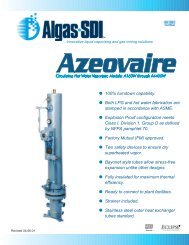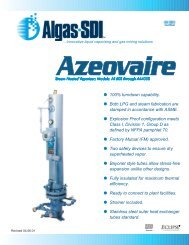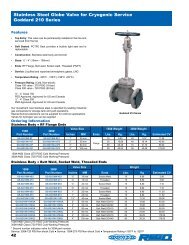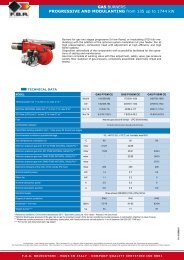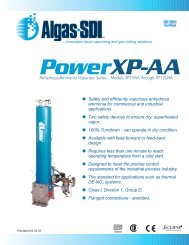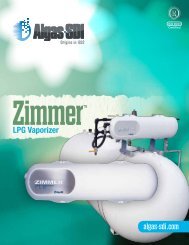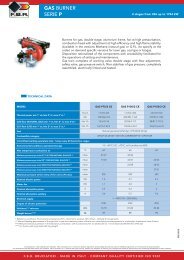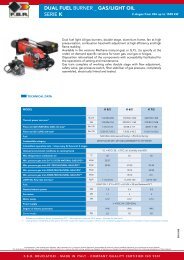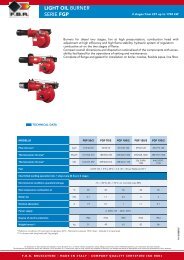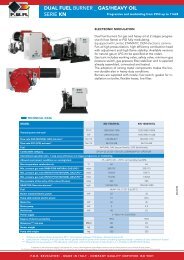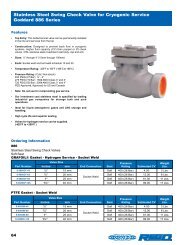LP-Gas Serviceman’s Manual
LP-Gas Serviceman's Manual - cecogas
LP-Gas Serviceman's Manual - cecogas
- No tags were found...
You also want an ePaper? Increase the reach of your titles
YUMPU automatically turns print PDFs into web optimized ePapers that Google loves.
Leak Testing the Installation<br />
B. Gauge Adapter Method (High Pressure Testing Procedure)<br />
Step 1. Inspect all connections and appliance valves to be sure<br />
such connections are wrench tight and that all appliance valves are<br />
closed including the pilot valves.<br />
Step 2. Install 2962 high pressure test gauge adapter on the tank<br />
service valve and connect the other end of the gauge adapter to the<br />
pigtail and regulator inlet.<br />
Step 3. Open container valve to allow the system to pressurize<br />
while observing indicated pressure on 300 pound testing gauge.<br />
Step 4. Close service valve tightly. Note pressure reading on the<br />
pressure gauge, then slowly bleed gas between service valve and<br />
gauge adapter, reduce pressure to 10 PSIG less than the original<br />
reading on the gauge and retighten gauge adapter into service valve<br />
or close bleeder port. Note reading on gauge.<br />
If gauge reading remains constant for 3 minutes, it can be<br />
assumed the system is leak tight. If the pressure reading drops,<br />
it indicates a leak somewhere in the high or low pressure piping<br />
system. NOTE: A pressure drop of 15 psig in 10 minutes time<br />
indicates a leak as little as 10 BTU of gas per hour. Check joints<br />
and other possible points of leakage with an approved combustible<br />
gas detector, soap and water, or an equivalent nonflammable<br />
solution. CAUTION: Since some leak test solutions, including<br />
soap and water, may cause corrosion or stress cracking, the piping<br />
should be rinsed with water after testing, unless it is determined<br />
the leak test solution is noncorrosive. Never test with an open<br />
flame. If there is an increase in pressure it indicates the container<br />
valve is not shut off completely. Shut off container valve tightly<br />
and repeat step 4.<br />
Step 5. Disconnect the 2962 test gauge adapter from the service<br />
shut off valve. Reconnect pigtail, tighten and test with soap and<br />
water or an appropriate leak detector solution (refer to caution in<br />
step 4., above).<br />
Step 6. If required, proceed with manometer method steps 2<br />
through 4. Never check for leaks with an open flame.<br />
37



